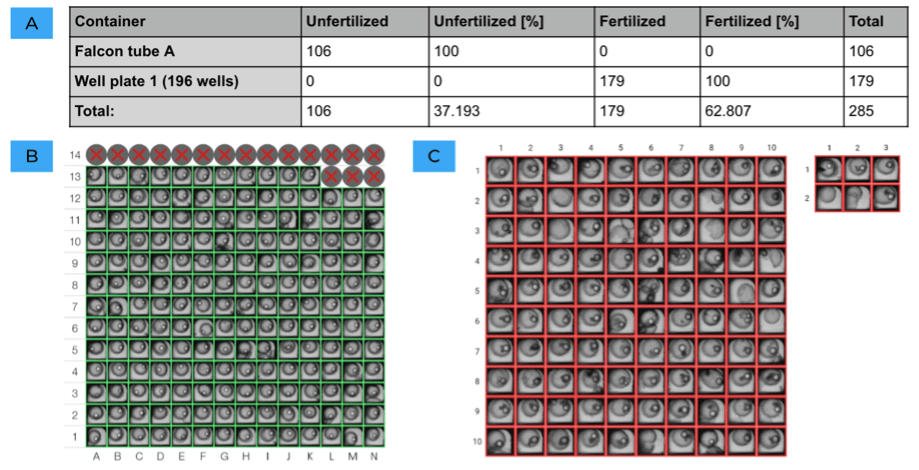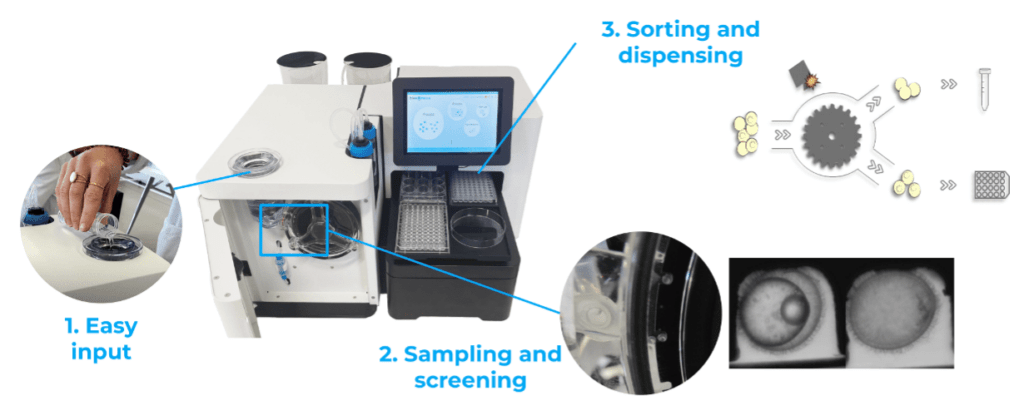Do you work with killifish and you would like to know how the EggSorter can benefit your lab?
This application note explains how the fish facility at the Leibniz Institute on Aging uses the EggSorter for the automatic sorting of killifish embryos.
Results demonstrate that the use of the EggSorter ensures more consistent and standardized handling of embryos, leading to improved embryo survival rates and overall success in killifish husbandry.
This application note explains how the fish facility at the Leibniz Institute on Aging uses the EggSorter for the automatic sorting of killifish embryos.
Results demonstrate that the use of the EggSorter ensures more consistent and standardized handling of embryos, leading to improved embryo survival rates and overall success in killifish husbandry.

"*" indicates required fields

"*" indicates required fields
SUMMARY
The Turquoise killifish (Nothobranchius furzeri) is a small, colorful, freshwater fish. Its short lifespan of 6 months and the rapid aging process makes it an ideal model for studying aging and age-related diseases [1]. The scientific community has fully sequenced the killifish genome and transcriptome, a keystone for enabling gene manipulation and studying epigenetic effects [2].
Our collaborating fish facility, at the Leibniz Institute on Aging, aims to provide healthy fish for biomedical research of several research groups [3]. Maintenace of this short-lived species can be challenging and research success depends on stable embryo survival rates. Standardized protocols for breeding management and embryo maintenance are essential to ensure successful killifish husbandry. A key part involves sorting of killifish embryos and distinguishing fertilized embryos from unfertilized ones. Performing this task includes specific training and can be time-consuming when done manually.
To optimize the process, the EggSorter was implemented. The use of the EggSorter ensures more consistent and standardized handling of embryos, leading to improved embryo survival rates and overall success in killifish husbandry. This automation supports the facility’s goal of providing healthy fish for biomedical research by streamlining a critical part of the breeding process.
MAIN FIGURES
Scroll lateraly below to explore the main figures of the application note.
![Fig. 1 Male and female killifish [4] and images of killifish embryos: fertilized healthy embryo (green frame) and unfertilized dead egg (red frame).](https://bionomous.ch/wp-content/uploads/2024/06/killifish-1.png)



RESULTS
The EggSorter was used to sort killifish embryos based on the fertilization status. This was done based on the appearance of the embryo. Healthy appearance includes noticeable compartments like an intact chorion, turgid yolk, lipid droplets and a perivitelline space. Unfertilized eggs change morphology within the first days. These eggs are marked by degraded structures, like broken chorion, opacities or collapsed yolk (Fig. 1). The device input quantity varied between 200 and 2,000 killifish embryos, with ages ranging from 0 to 8 days post-fertilization (dpf). Overall, the system’s algorithm, trained on killifish embryos, demonstrated an accuracy of 96% globally, and 99% accuracy for the dispensing.
Regarding the viability of the embryos, the average survival two weeks after automatic processing was 86%. When processed by hand, survival is highly variable, depending on egg quality and personal training experience (60-90%).
